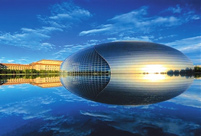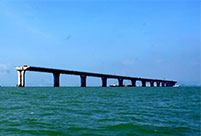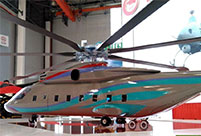

 |
| Sudbury Neutrino Observatory |
The high profile Nobel Prize in Physics in 2015 has been granted to Japanese scientist Takaaki Kajita and Canadian scientist Arthur B. McDonald on October 6, “for their key contributions to the experiments which demonstrated that neutrinos change identities”, a metamorphosis which requires that neutrinos have mass.
Neutrinos have long been deemed massless. “The discovery has changed our understanding of the innermost workings of matter and can prove crucial to our view of the universe,” says the The Royal Swedish Academy of Sciences.
While we laud the achievements of the physicists, some might wonder, “how are particles as small as this observed and studied?”
Let us take a look at the Sudbury Neutrino Observatory located in Canada— the exact place where the Nobel-winning discovery was made in 2001.
The observatory is built 2,100 meters underground. The main part of it is a ball-shaped contain with a diameter of 12 meters with 1,000 tons of heavy water in it. The heavy water would interact with solar neutrinos.
Another observatory is the Super-Kamiokande under Mount Kamioka in Japan— the place where the statement made by aforementioned Sudbury Neutrino Observatory was confirmed in 2002.
Located 1,000 meters underground, Super-Kamiokande consists of a cylindrical stainless steel tank that is 41.4 m (136 ft) tall and 39.3 m (129 ft) in diameter holding 50,000 tons of ultra-pure water.
 |
 Top 10 nominated designs at BJDW
Top 10 nominated designs at BJDW Fashion show staged in Forbidden City at night
Fashion show staged in Forbidden City at night Construction of HK-Zhuhai-Macao Bridge enters final stage
Construction of HK-Zhuhai-Macao Bridge enters final stage Model of heavy-lift copter makes debuts at Tianjin expo
Model of heavy-lift copter makes debuts at Tianjin expo Art photos of Chinese beauty in Han Chinese clothing
Art photos of Chinese beauty in Han Chinese clothing Stunning photos of air show in China’s V-Day parade
Stunning photos of air show in China’s V-Day parade Models change clothes on street in Hangzhou
Models change clothes on street in Hangzhou Charming Chinese female soldiers
Charming Chinese female soldiers Beauty vs. muscular man
Beauty vs. muscular man Rising to the challenge
Rising to the challenge Rand report echoes Cold War mind-set, overstates threats
Rand report echoes Cold War mind-set, overstates threats Inland nuke plants crucial to energy future
Inland nuke plants crucial to energy future Communist confrontation
Communist confrontationDay|Week